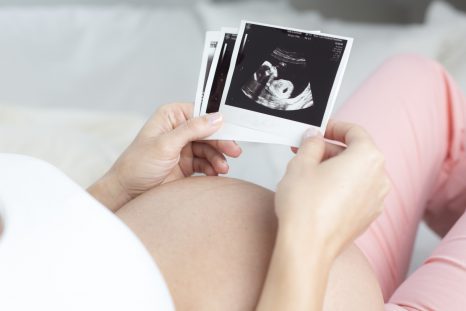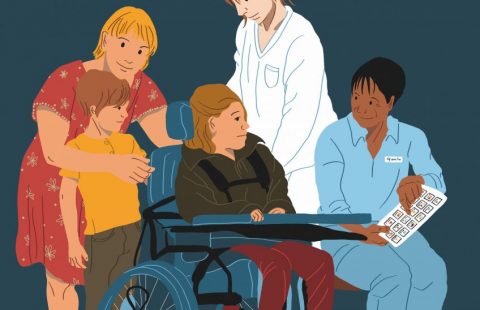
Exposure to extreme temperatures from the fetal stage could impact health. © Fotalia
Exposure to extreme temperatures from the fetal stage could impact health. This is what suggests a study by researchers from Inserm, Université Grenoble Alpes and CNRS, based on the SEPAGES cohort[1], intended to study the impact of various environmental factors on the health of pregnant women and their children. In this research, to be published in JAMA Network open, associations were found in newborn girls, between in utero exposure to very high or very low ambient temperatures from the second trimester of pregnancy and the alteration of several respiratory parameters.
The thermoregulation implemented by the body in response to variations of temperature requires the adaptation of maternal blood flow and cardiac function which, when this occurs during pregnancy, can be to the detriment of the fetus. Physiological alterations have also been observed in animals in response to heat stress exposures, such as impaired placental development with reduced blood flow, or oxidative stress which, outside of normal conditions, may affect the health of mother and child. External temperature could therefore have an impact on embryo-fetal development.
A team led by Inserm researchers Johanna Lepeule and Ariane Guilbert at the Institute for Advanced Biosciences (Inserm/Université Grenoble Alpes/CNRS), wished to verify this hypothesis using data from the SEPAGES cohort (Assessment of Air Pollution Exposure During Pregnancy and Effect on Health). Made up of pregnant women and children from their pregnancies, this cohort makes it possible to study the effect of various environmental factors on health.
Exposure Modeled Throughout Pregnancy
The researchers modeled the exposure to ambient temperatures of 343 women and their children, from conception to their first weeks of life. At the same time, they evaluated the respiratory function of the newborns at around 6 to 7 weeks after birth. Various measurements were used to calculate the tidal volume (volume of air that enters and leaves with each breath), respiratory rate (number of breaths per minute), and functional residual capacity (FRC) (volume of air remaining in the lungs after an expiration)[2].
Since fetal development and respiratory function differ slightly according to sex, the research team also compared outcomes between girls and boys.
Associations That Vary According to Sex
In boys, the scientists did not observe any significant alterations in lung function associated with external temperature during pregnancy. However, they found that girls exposed in utero from the second trimester of pregnancy to the highest or lowest temperatures had a lower FRC and a higher respiratory rate than those exposed to temperatures closer to the average.
In addition, girls exposed to very low temperatures in utero had decreased tidal volume.
“Although the observed variations are not pathological in nature and do not make it possible to predict a future respiratory disorder, explains Lepeule, the various lung function measurements all converge towards an association between in utero exposure to high or low temperatures and poorer lung performance in newborn girls. “
New analyses of the respiratory data collected in children at 3 and 8 years of age will be needed in order to determine whether these associations persist over the long term or whether they are reversible over time.
In the meantime, “these findings underpin the importance of developing public policies to protect pregnant women and their children from extreme temperatures, particularly in the current context of climate change,” concludes Lepeule.
[1] The SEPAGES couple-child cohort (Assessment of Air Pollution Exposure During Pregnancy and Effect on Health), coordinated by Inserm and Université Grenoble Alpes, aims to characterize the exposure of pregnant women and their children to environmental contaminants and study their effect on the health of pregnant women, fetuses, and children.
[2] This residual volume plays an essential role in the maintenance of lung function: as the lungs are elastic, they retract during the muscle relaxation that enables expiration. At the end of expiration, the residual volume makes it possible to limit the retraction forces placed on the lungs so that the pulmonary territories remain open to gas exchange (O2 and CO2 essentially). Otherwise, the lungs would close on themselves, and the alveoli would collapse, meaning that gas exchange could no longer take place.
These contents could be interesting :


